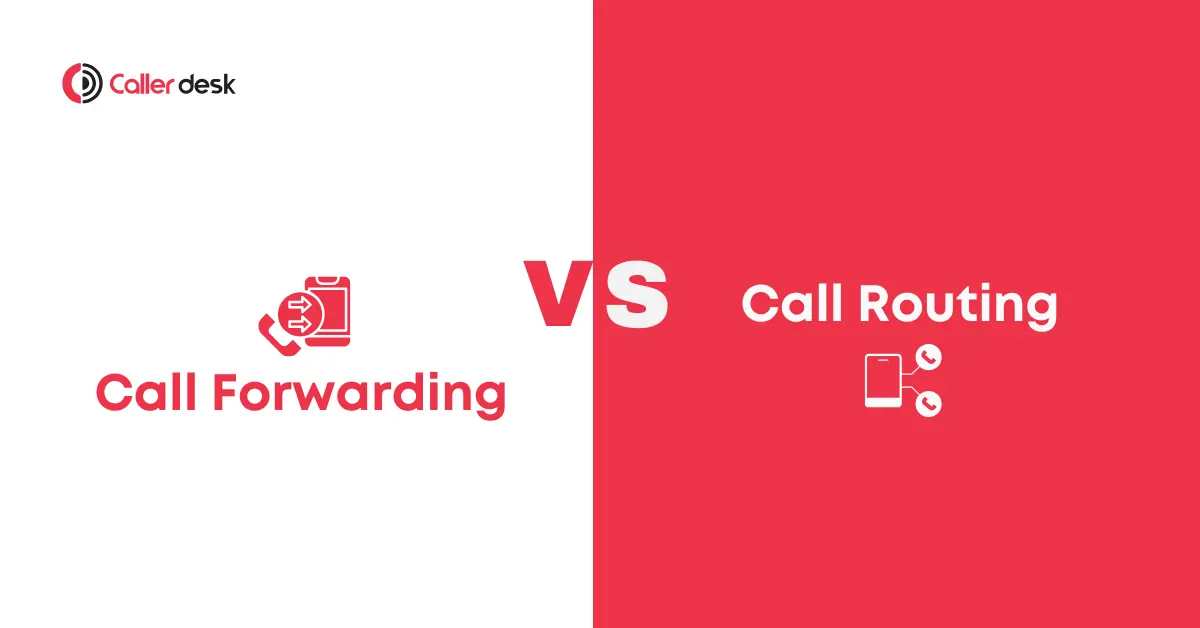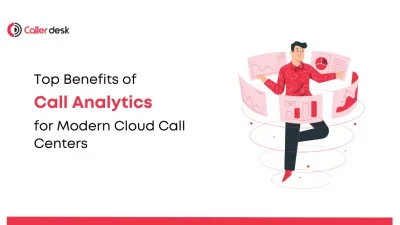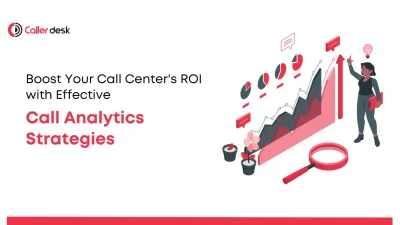Keeping customers happy means staying connected, no matter the size of your business. Whether you’re a small startup or managing a large enterprise, missing a call could mean losing a valuable customer. This is where tools like call forwarding and call routing step in.
While both features ensure that calls are handled efficiently, they work differently and serve unique purposes. In this guide, we’ll break down the key differences, benefits, and when to use call forwarding and call routing. Plus, we’ll show you how CallerDesk simplifies these essential tools for your business.
What is Call Forwarding?
Call forwarding redirects incoming calls from one phone number to another. Think of it as a virtual assistant that ensures calls reach you, even when you’re away from your primary phone.
How Does Call Forwarding Work?
- Unconditional Forwarding: Automatically forwards all calls to a set number.
- Conditional Forwarding: Forwards calls only if the line is busy, there’s no answer, or the phone is unreachable.
- Simultaneous Ringing: Rings multiple devices at once so the first available person can answer.
Benefits of Call Forwarding
- Always Available: Stay reachable even when you’re out of the office.
- Simple and Cost-Effective: A straightforward solution that doesn’t require complex systems.
- Geographical Freedom: Redirect calls to any location, whether you’re traveling or working remotely.
How CallerDesk Enhances Call Forwarding
- Seamless Integration: CallerDesk’s call forwarding feature ensures smooth transitions between devices, minimizing missed calls.
- Custom Schedules: Set specific forwarding rules based on working hours or team availability.
- Multiple Devices: Calls can ring on multiple devices simultaneously, making it perfect for teams working in different locations.
What is Call Routing?
Call routing takes things a step further by intelligently directing calls to specific departments, agents, or teams based on pre-defined rules. It’s like having a virtual receptionist that knows exactly where to send every call.
How Does Call Routing Work?
- Skill-Based Routing: Directs calls to agents with the expertise to handle specific queries.
- Time-Based Routing: Routes calls to different numbers based on the time of day or business hours.
- Geographic Routing: Sends calls to teams in specific locations based on the caller’s area code.
Benefits of Call Routing
- Improved Efficiency: Customers are connected to the right person without unnecessary transfers.
- Enhanced Customer Experience: Faster resolution times lead to happier customers.
- Automation: Eliminates manual call handling, freeing up your team for more important tasks.
How CallerDesk Enhances Call Routing
- Advanced IVR Systems: CallerDesk’s Interactive Voice Response (IVR) makes it easy for customers to navigate call menus and reach the right department.
- Skill-Based Precision: With CallerDesk’s skill-based routing, calls are directed to the most qualified team member, improving first-call resolution rates.
- Analytics Integration: Gain insights into call patterns and agent performance to refine your routing strategies.
Call Forwarding vs. Call Routing: Key Differences
| Feature | Call Forwarding | Call Routing |
|---|---|---|
| Purpose | Redirects calls to another number | Routes calls to the appropriate department or person |
| Complexity | Simple to set up and use | More advanced, with customizable routing rules |
| Customer Experience | Ensures calls are answered | Improves efficiency by connecting customers to the right agent |
| Ideal For | Small businesses or individuals | Larger businesses or those with complex call management needs |
When to Use Call Forwarding
Call forwarding is ideal for businesses that prioritize simplicity and accessibility.
Best Use Cases for Call Forwarding
- Small Businesses and Solopreneurs: Stay reachable without needing a dedicated receptionist.
- Remote Work: Ensure calls reach your team wherever they’re working.
- Temporary Re-Routing: Redirect calls during office renovations or system downtimes.
Example:
A real estate agent uses call forwarding to receive inquiries on their mobile phone while showing properties to clients, ensuring they never miss a potential lead.
When to Use Call Routing
Call routing is the go-to solution for businesses managing large volumes of calls or diverse customer needs.
Best Use Cases for Call Routing
- Customer Support Teams: Quickly direct calls to agents specializing in technical issues, billing, or sales.
- E-Commerce: Handle inquiries across multiple departments, such as returns, delivery, and product support.
- Healthcare Providers: Route calls to the appropriate department, whether for appointments, emergencies, or insurance questions.
Example:
An online retailer uses call routing to connect customers to the returns department for exchanges, the logistics team for delivery updates, and the support team for product troubleshooting.
Why CallerDesk is the Perfect Solution
Whether you’re considering call forwarding, call routing, or both, CallerDesk offers a comprehensive suite of features tailored to your business needs.
Unique CallerDesk Features
- Customizable Rules: Create tailored forwarding or routing rules based on your business’s workflow.
- Real-Time Analytics: Monitor call volumes, customer wait times, and agent performance with advanced analytics.
- Global Coverage: Seamlessly handle calls across regions or time zones.
- Scalability: As your business grows, CallerDesk’s solutions adapt to accommodate increasing call volumes.
- 24/7 Support: Dedicated customer support ensures your system runs smoothly at all times.
How to Decide Between Call Forwarding and Call Routing
- Evaluate Your Needs
- If your primary goal is accessibility, choose call forwarding.
- For complex call management, opt for call routing.
- Consider Your Business Size
- Call forwarding is perfect for small businesses or individuals.
- Call routing suits larger organizations with multiple teams or departments.
- Analyze Call Volumes
- Low to moderate call volumes? Call forwarding is enough.
- High call volumes or diverse customer needs? Call routing is the way to go.
- Prioritize Customer Experience
- Use call forwarding to ensure customers can always reach you.
- Use call routing to streamline customer interactions and improve satisfaction.
Conclusion
Both call forwarding and call routing are essential tools for managing business communication effectively. While call forwarding ensures that no call goes unanswered, call routing streamlines the customer journey, connecting them to the right person or team effortlessly.
For businesses seeking an all-in-one solution, CallerDesk offers unparalleled flexibility, scalability, and reliability. Whether you need simple call forwarding or advanced routing capabilities, CallerDesk has you covered.
Ready to enhance your business communication? Contact CallerDesk today and experience seamless, efficient, and customer-centric call management solutions!





